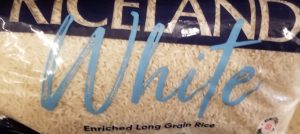Diet Construction
Food Contaminants and Health Considerations
kimmoss
Introduction
Use of foods with high metal concentrations is harmful for health. Metals such as mercury, lead, aluminum, cadmium, and arsenic in higher amounts have side effects. Choosing foods which do not contain these high levels of metals is best as these should be left out of the diet. For a closer look at some detrimental effects of metals, the reader is directed to the sources below:
- Monger A, Wangdi K. Lead and Mercury Exposure and Related Health Problems in Metal Artisan Workplaces and High-Risk Household Contacts in Thimphu, Bhutan. ScientificWorldJournal. 2020;2020:9267181. Available at https://www.ncbi.nlm.nih.gov/pmc/articles/PMC7085879/
- Landrigan PJ, Stegeman JJ, Fleming LE, et al. Human Health and Ocean Pollution. Ann Glob Health. 2020;86(1):151. Available at https://www.ncbi.nlm.nih.gov/pmc/articles/PMC7731724/
- Genchi G, Sinicropi MS, Lauria G, Carocci A, Catalano A. The Effects of Cadmium Toxicity. Int J Environ Res Public Health. 2020;17(11):3782. Available at https://www.ncbi.nlm.nih.gov/pmc/articles/PMC7312803/
Metals

Salmon is one fish that is lower in mercury.
Foods with high levels of mercury include some fish which can be seen at the website below:
Mercury in Fish Wallet Card, National Resource Defense Council – https://www.nrdc.org/sites/default/files/walletcard.pdf

Rice is high in cadmium and arsenic.
Rice, due to environmental pollution is best limited in the diet. Having it everyday could lead up to high levels of cadmium or arsenic in the body. Choose other whole grains such as bulgur wheat, quinoa, amaranth, wheat berries, or rye more often.
